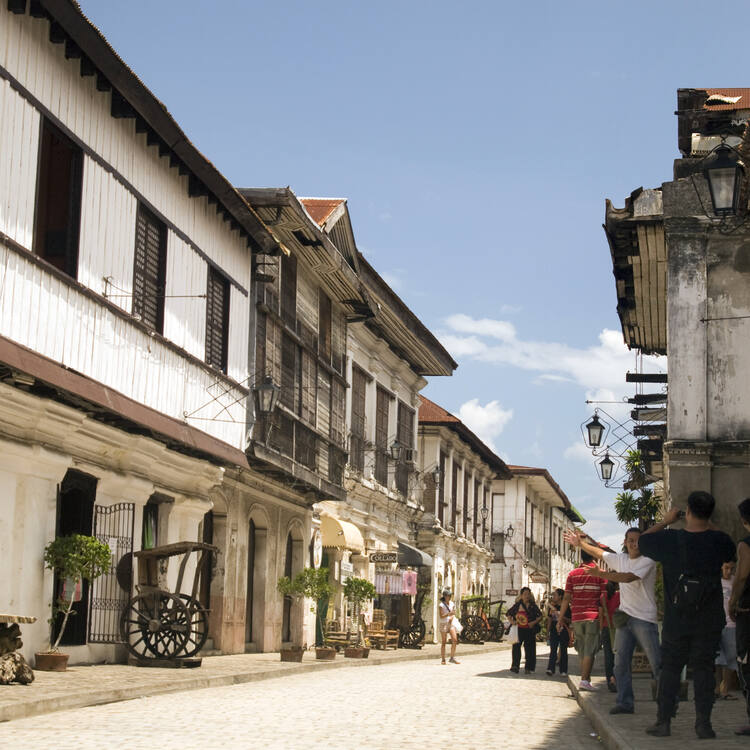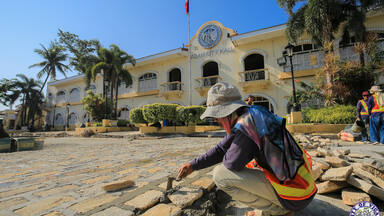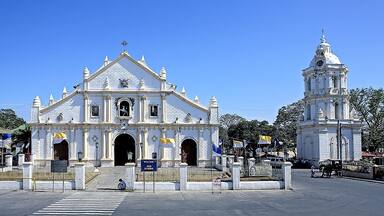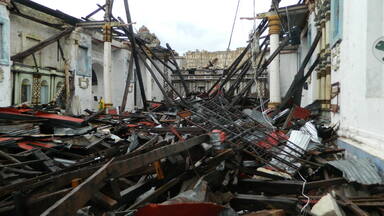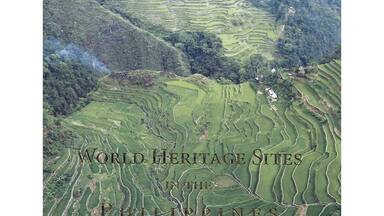Historic City of Vigan
Historic City of Vigan
Established in the 16th century, Vigan is the best-preserved example of a planned Spanish colonial town in Asia. Its architecture reflects the coming together of cultural elements from elsewhere in the Philippines, from China and from Europe, resulting in a culture and townscape that have no parallel anywhere in East and South-East Asia.
Description is available under license CC-BY-SA IGO 3.0
Ville historique de Vigan
Vigan est l'exemple le plus intact de ville coloniale espagnole fondée au XVIe siècle en Asie. Son architecture reflète la réunion d'éléments culturels en provenance d'autres régions des Philippines, de Chine et d'Europe, créant une culture unique et un paysage urbain sans équivalent en Extrême-Orient.
Description is available under license CC-BY-SA IGO 3.0
مدينة فيغان التاريخية
تُعتبَر فيغان أكثر المدن دلالةً على الاستعمار الاسباني، وهي قد أُسِّست في القرن السادس عشر في آسيا. وتعكس هندستها تمازجَ عناصرَ ثقافيّة تختلف مصادرها: من الفيليبين الى الصين وحتى من اوروبا، مبتكرة بذلك ثقافة فريدة ومنظراً طبيعيًّا مُدنيًّا لا مثيل له في آسيا القصوى.
source: UNESCO/CPE
Description is available under license CC-BY-SA IGO 3.0
维甘历史古城
维甘始建于16世纪,是亚洲保存最完好的西班牙殖民城市。该建筑不仅反映出菲律宾其他地方的建筑风格,而且还融入了中国和欧洲的建筑特色。维甘风光秀美,有丰富的文化底蕴,在东亚和东南亚都是首屈一指的。
source: UNESCO/CPE
Description is available under license CC-BY-SA IGO 3.0
Исторический город Виган
Основанный в XVI в. Виган – это наиболее хорошо сохранившийся пример спланированного испанского колониального города в Азии. Его архитектура вбирает в себя традиции, свойственные как другим районам на Филиппинах, так и Китаю и Европе. Все это повлияло на местную культуру и облик города, которым нет аналогов нигде на Дальнем Востоке и в Юго-Восточной Азии.
source: UNESCO/CPE
Description is available under license CC-BY-SA IGO 3.0
Ciudad histórica de Vigan
Fundada en el siglo XVI, la ciudad de Vigan es el ejemplo más fiel e intacto del urbanismo colonial español en Asia. Su arquitectura es un exponente de la confluencia de elementos culturales procedentes de otras regiones de Filipinas, así como de China y Europa. Esa confluencia ha dado por resultado la configuración de un paisaje urbano excepcional y de una cultura sin parangón en todo el Extremo Oriente.
source: UNESCO/CPE
Description is available under license CC-BY-SA IGO 3.0
古都ビガン
ビガンはフィリピン北部、イロコス・スル州の州都。ルソン島北西部アブラ川河口右岸に位置する。1572年、スペイン領となったが、スペイン征服前から、交易を通して日本・中国にはイロコスとして知られていた。フィリピン各地や中国の文化要素と巧みに融合した16世紀のスペイン風の建築様式が多く残されており、その独特の文化と街並みの景観は、他の東アジアや東南アジア各地には見られないものである。source: NFUAJ
Historische stad Vigan
Vigan werd in de 16e eeuw gesticht en is het best bewaard gebleven voorbeeld van een Spaanse koloniale stad in Azië. Vigan vertegenwoordigt een unieke combinatie van Aziatische bouw- en constructiestijl en Europese koloniale architectuur en planning. Culturele elementen uit andere delen van de Filippijnen zijn samengegaan met Chinese en Europese invloeden, wat resulteert in een stadsbeeld dat nergens anders in Oost en Zuidoost Azië te vinden is. Vanwege de gemengde invloeden wijkt Vigan ook af van de Spaanse koloniale steden in Latijns Amerika. De voormalige Europese handelsstad is tegenwoordig verdeeld in negen districten en dertig dorpen.
Source: unesco.nl
Outstanding Universal Value
Brief synthesis
Vigan is the most intact example in Asia of a planned Spanish colonial town, established in the 16th century. Its architecture reflects the coming together of cultural elements from elsewhere in the Philippines and from China with those of Europe and Mexico to create a unique culture and townscape without parallels anywhere in East and South-East Asia. An important trading post before the colonial era, Vigan is located at the river delta of Abra River, along the northwestern coastline of the main island of Luzon, in the Province of Ilocos Sur, Philippine Archipelago. The total area of the inscribed property is 17.25 hectares. The traditional Hispanic checkerboard street plan opens up into two adjacent plazas. The Plaza Salcedo is the longer arm of an L-shaped open space, with the Plaza Burgos as the shorter. The two plazas are dominated by the St. Paul’s Cathedral, the Archbishop’s Palace, the City Hall and the Provincial Capitol Building . The urban plan of the town closely conforms with the Renaissance grid plan specified in the Ley de la Indias for all new towns in the Spanish Empire. There is, however, a noticeable difference between Vigan and contemporary Spanish colonial towns in Latin America in the Historic Core (known as the Mestizo district), where the Latin tradition is tempered by strong Chinese, Ilocano, and Filipino influences. As its name implies, this district was settled by affluent families of mixed Chinese-Ilocano origin. The area contains the historic footprint of the entire town and consists of a total of 233historic buildings tightly strung along a grid of 25 streets.
The two storey structures are built of brick and wood, with a steeply pitched roof reminiscent of traditional Chinese architecture. The exterior walls of the upper storey are enclosed by window panels of kapis shells framed in wood which can be slid back for better ventilation. Most of the existing buildings were probably built in the mid 18th to late 19th centuries. Due to the economic decline of Vigan as an economic center after the World War II, only a few of the historic buildings had internal reorganization for alternative use. The Chinese merchants and traders conducted their business from shops, offices and storerooms on the ground floors of their houses, with the living quarters above. In addition to the domestic and commercial architecture, Vigan possesses a number of significant public buildings, which also show multi-cultural influences.
Vigan is unique for having preserved much of its Hispanic colonial character, particularly its grid street pattern and historic urban lay out. Its significance also lies on how the different architectural influences are blended to create a homogenous townscape.
Criterion (ii): Vigan represents a unique fusion of Asian building design and construction with European colonial architecture and planning.
Criterion (iv): Vigan is an exceptionally intact and well-preserved example of a European trading town in East and South-East Asia.
Integrity
All elements necessary to express the values of the property are included within the property. This ensures the representation of its significance as a well planned and well preserved Hispanic colonial town. At present, the salient features of most of the ancestral Vigan houses are conserved, although a few houses remain in deteriorating condition due to neglect of their absentee owners.
Authenticity
Vigan has maintained its authenticity in its grid street pattern, historic urban lay out and use of open spaces. The historic buildings have maintained their traditional uses for commerce at the lower floors and as residence for the owners on the upper floors. However, very few houses remain untouched. Changes introduced to the betterconserved houses have been to the interior: subdividing the large living quarters into smaller apartments, and adjusting of ground floor to provide spaces to let out for commercial use. After having been completely altered to allow new uses, many structures have lost their authenticity. A few structures have been abandoned, neglected, and left to decay. The original building materials such as bricks, wood, kapis shells and lime for mortar and plaster were all obtained from surrounding areas.. The lack of traditional building materials such as wood and lime for plaster and mortar has resulted in the use of modern materials such as cement and galvanized iron sheets for roofing. The awareness on the need to preserve authenticity has dramatically increased since the site was inscribed. Conservation practices that have developed organically over the last three centuries are now being re-introduced, making use of a considerable reserve of traditional building crafts that have survived”.
